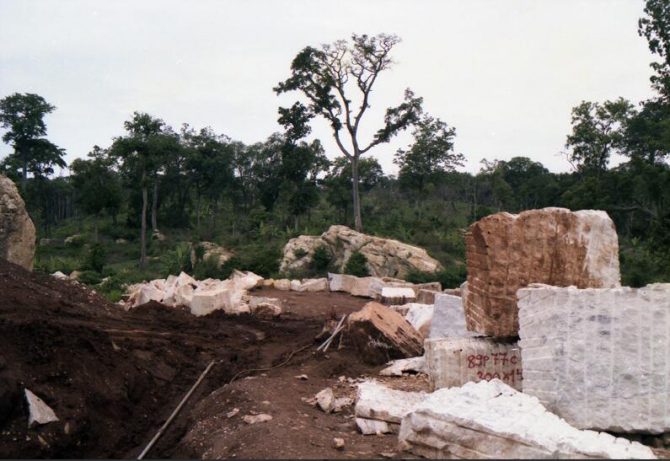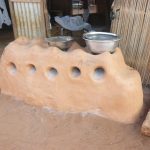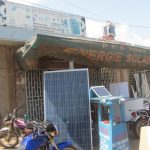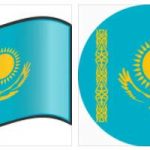The economic structure of Togo is still characterized by the disparity resulting from the colonial era between the well-connected south and the north, which is largely based on traditional subsistence farming. Apart from the phosphate deposits (in smaller quantities also limestone, marble and other natural resources), Togo is an agricultural country that is poor in raw materials and dependent on rain.
The economy is poorly diversified and has little added value in manufacturing (an average of 16% of GDP in 2015-2018). Agriculture is accordingly an important economic sector in which around two thirds of the population makes a living and which accounts for 30% of GDP. 67% of the land area is used for agricultural production.
According to extrareference, another important sector in Togo’s economic life is trade, with transit trade from the port of Lomé to the Sahel countries being of great importance. Due to its central location in West Africa and the expansion of highways, the deep-sea port and the airport, the capital Lomé has developed into the logistics hub of the region, which the government would like to build on. The important trade and logistics sector ensures that the service sector now accounts for around 50% of GDP. To date, more than 60 companies, mostly with foreign capital, have settled in the SAZOF free trade zone set up near the port.
Mining and industry account for around 20% of GDP. The industrial production is mainly due to the mining and processing of phosphate, cement production, which now export earnings of the phosphate has overtaken and resumed several years ago mining of iron ore. In addition, there are companies in the food processing industry (brewery beverages, tobacco) and the production of simple industrial goods (plastic articles, building materials), most of which remain in the country and around a third are exported to the CEDEAO countries.
In addition to cement and phosphate, cotton, coffee and cocoa are the most important export goods. The main imports are crude oil, food, machines, vehicles, textiles and other industrial finished products. The country has to import significantly more than it exports each year.
The informal sector is an important, if not the dominant, area of the Togolese economy. A study by the National Institute for Statistics and Economic and Demographic Studies (INSEED) came to the conclusion that the informal sector, also known as the shadow economy, creates 87.9% of jobs. The state has been trying to formalize the labor market for years, but the great lack of jobs makes this difficult. Small and medium-sized companies in particular hardly get any bank loans, for example to establish themselves alongside international companies on the Togolese market. According to a study by the International Monetary Fund (IMF), the informal sector accounts for around 20-30% of Togo’s GDP.
It primarily includes the retail trade, like the numerous stalls on the streets. Retail trade is one of the most important economic sectors in Togo and is dominated by women. The government is however a thorn in the side of the many kiosks and sales stands of the informal sector, which is why they are repeatedly destroyed. The numerous moto taxi drivers are also part of the informal economy. In order to better organize this area, the DOSI – Délégation à l’Organisation du Secteur Informel, which reports to the Prime Minister, was founded in 2008.
Lomé is an important banking location in West Africa, which is why Togo was once called the “Switzerland of Africa”. Since the 1990’s, the banking system has deteriorated as international customers and financiers withdrew due to the difficult political situation. In 2007 the IMF called for reform of the banking sector, including the privatization of government-run banks. The West African Economic and Monetary Union then put the system to the test. More than 30% of the loans granted were classified as bad loans by semi-public institutions. The IMF’s call for privatization of the two remaining state banks, the Bank for Commerce and Industry (BHKW) and the Union of Togolese Banks (UTB), had been rejected by the government for years and was finally approved by the National Assembly on November 16, 2018.
In addition to formal institutional banking, the microfinance system (systèmes financiers décentralisés, SFD) and informal traditional African savings and loan programs (tontines, known in Togo as Adakavi) play an important role, especially for small and medium-sized enterprises and the informal sector.
The CIA World Factbook regularly publishes updated tables with the most important economic and financial indicators. In September 2016, the World Bank published a detailed country diagnosis of Togo’s economy. Relevant business magazines are Les Afriques, CommodAfrica, Financial Afrik and Ecofin Finance.
The French travel guide Le Routard has looked around the Lomés markets and presents not only the texts but also some beautiful photos. Independent entrepreneurs report in a film who offer their services as tent rental companies at funerals and other events. Many of the smaller craft businesses, such as carpenters, blacksmiths, locksmiths or bricklayers, are one-man businesses, but they work with a relatively large number of apprentices who in turn have to pay apprenticeship fees. The film clip Une entreprise togolaise presents a small upholstery company and its employees.









